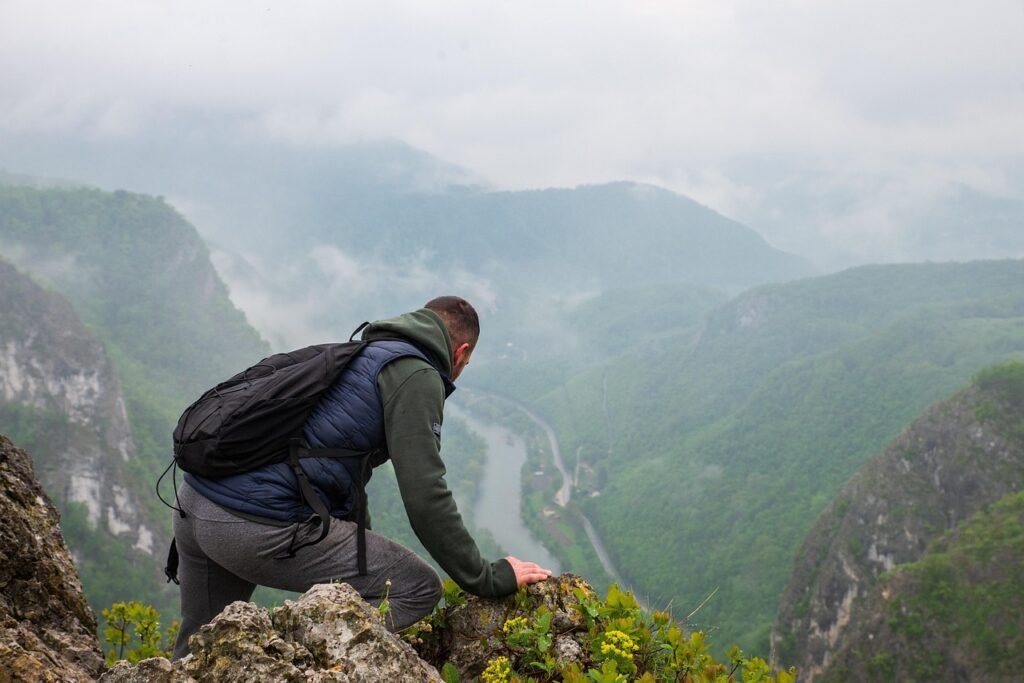How to Train for Your First Day Hike: A Beginner’s Guide to Hitting the Trail
Thinking about tackling your first day hike? That’s awesome! Day hiking is one of the most rewarding ways to experience nature, boost your fitness, and reset your mind. But before you lace up your boots, it’s smart to build up your strength, endurance, and confidence—especially if you’ve never hiked before.
In this guide, we’ll show you how to train for your first day hike, including step-by-step training tips, gear recommendations, safety advice, and common mistakes to avoid. Whether your goal is a 2-mile woodland loop or a 10-mile mountain trail, this article will get you ready.

Why Training for Hiking Is Important
Hiking isn’t just “walking in the woods.” Trails often involve:
- Uneven terrain
- Elevation gain
- Varying weather
- Physical strain on your knees, ankles, and back
Without preparation, you risk injury, fatigue, or turning back early. Training for your first hike means building the right muscles, stamina, and mindset—so you enjoy the experience instead of struggling through it.
What Is a Day Hike?
A day hike is any hiking trip completed within one day (i.e., no overnight camping). It can range from a quick 1-mile trail to a strenuous 15-mile alpine route. You usually carry a lightweight pack with essentials like water, snacks, a first aid kit, and weather-appropriate layers.
How to Train for Your First Day Hike
1. Start Walking Regularly
Goal: 30–45 minutes of brisk walking, 3–4 times per week.
Why it works: Walking builds your aerobic base, conditions your feet and joints, and mimics the motion of hiking.
Tips:
- Wear the shoes you plan to hike in.
- Choose varied terrain (grass, gravel, hills).
- Use a backpack with light weight to simulate trail conditions.
2. Add Elevation Training
Even a short trail can feel brutal if it has steep sections.
Options:
- Treadmill on incline mode (10–15%)
- Local stairs or bleachers
- Small hills in your neighborhood
Gradually increase the number of flights or minutes you climb each week.
3. Build Leg and Core Strength
You’ll need muscle endurance to power up hills and stabilize your footing on uneven surfaces.
3 Essential Exercises:
- Lunges: Great for glutes and hamstrings.
- Step-ups: Mimics uphill hiking. Use a bench or box.
- Planks: Strengthens your core for balance and posture.
Do 2–3 sets, 2–3 times per week. Bodyweight is fine to start.
4. Train With a Backpack
Once you’re comfortable walking, begin adding weight to your backpack.
Start with 5–10 pounds and gradually work up to the full weight you plan to carry on your hike (typically 10–15 pounds for a day hike). This conditions your shoulders, lower back, and hips. Use water bottles or canned goods for training weight.
Tip: Practice taking your backpack on and off quickly, as you’ll likely do this often during your actual hike.
5. Practice on Real Trails
Whenever possible, get off sidewalks and head to local parks or beginner trails.
Benefits of trail practice:
- Builds balance and agility
- Gets your body used to uneven footing
- Lets you test your gear in real conditions
6. Don’t Skip Recovery
Rest is part of training. Your muscles need time to rebuild after long walks, strength workouts, and trail sessions.
Rest days help:
- Prevent injury
- Improve long-term endurance
- Avoid burnout
Aim for one full rest day per week, and don’t increase total mileage by more than 10% weekly.
Sample 4-Week Training Plan for Your First Day Hike
| Week | Walk/Distance | Strength | Elevation | Trail Practice |
|---|---|---|---|---|
| Week 1 | 2–3 miles, 3x/week | Bodyweight lunges, planks | 2x stair sessions | 1 short nature trail |
| Week 2 | 3–4 miles, 4x/week | Step-ups, core | 2x hills or bleachers | 1 trail hike with small pack |
| Week 3 | 4–5 miles, 4x/week | Add weight to step-ups | 2x stairs with backpack | 1 medium trail (3–4 mi) |
| Week 4 | 5–6 miles, 4–5x/week | Mix strength & hike | Stair/hill combo | Full-length trail with full pack |
What to Bring on Your First Day Hike
As you get closer to hike day, make sure you pack appropriately. Here’s a basic checklist for a beginner-friendly day hike:
- Comfortable hiking shoes or trail runners
- Moisture-wicking socks
- Backpack with chest strap
- 1.5–2 liters of water
- High-calorie snacks (nuts, granola bars, fruit)
- Lightweight rain jacket or windbreaker
- Sunscreen and sunglasses
- Hat or buff
- Map or GPS app
- Small first aid kit
- Cell phone (charged)
- Trekking poles (optional for stability)
How Long Should My First Hike Be?
For beginners, aim for a 2 to 5-mile round trip with minimal elevation gain. Choose a loop or out-and-back trail that has:
- Clearly marked signs
- Access to water and shade
- Moderate terrain (no scrambling or steep inclines)
Always check trail conditions before you go, especially in shoulder seasons when mud or ice might be present.
Common Mistakes New Hikers Make
- Wearing brand new boots without breaking them in
- Not hydrating enough before or during the hike
- Skipping strength training (especially core and glutes)
- Starting with a trail that’s too advanced
- Underestimating weather or trail conditions
- Not telling anyone your plans
FAQ: Training for Your First Hike (Google’s “People Also Ask”)
How fit do you need to be to go on a hike?
You don’t need to be an athlete, but a base level of walking fitness and the ability to handle uneven ground for 2–3 hours is ideal. Training beforehand helps avoid injury and improves enjoyment.
How do beginners train for hiking?
Start with regular walking, then add strength exercises like lunges and step-ups. Practice on trails and with a backpack to prepare for real-world conditions.
Can you hike without training?
While it’s possible to complete a short, flat hike without training, it’s not recommended. Training helps prevent soreness, injury, and early fatigue.
What muscles should I train for hiking?
Focus on your glutes, quads, hamstrings, calves, and core. These muscle groups handle the bulk of the work during hiking, especially on hills and descents.
How long should you train before your first hike?
Give yourself 3 to 4 weeks if you’re starting from a sedentary lifestyle. Already active individuals may only need 1 to 2 weeks of hiking-specific training.
